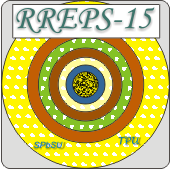Speakers
Sergei Abdrashitov
(National Research Tomsk Polytechnic University)
Timur Tukhfatullin
(National Research Tomsk Polytechnic University)
Description
The radiation from the high energy (up to 10 GeV) electron beam is known to be reasonably effective positron source. An approach being possess high efficiency is to use electron beam for production of channeling radiation (CR) in a crystalline target (radiator) and subsequent electron-positron pair production in amorphous target (convertor), so called a “hybrid” solution [1].
The Mathematica [2] code BCM-1 developed by the authors enables calculating the trajectories and CR spectra of both planar and axial channeled electrons as well as positrons in crystals. The code was used to perform the comparison of the positron yield in a thin amorphous W converter produced by bremsstrahlung, by axial 〈100〉 and planar (110) channeling radiation in a W crystal [3].
Here we consider the radiator-converter approach at 200 MeV channeled electrons (the SPARC facility energies) for the case of using W crystalline radiator and Si, Ge and W amorphous converters. Computer modeling is carried out taking into account electron dechanneling at planar channeling in the radiator and positron stopping in the convertor.
References
1. R. Chehab et al. Physics Letters B 525 (2002) 41.
2. O.V. Bogdanov et al. J. of Phys.: Conf. Ser. 236 (2010) 1.
3. S.V. Abdrashitov et al. Nucl. Instr. Meth. B 355 (2015) 65.
Authors
Oleg Bogdanov
(Tomsk Polytechnic University)
Sergei Abdrashitov
(National Research Tomsk Polytechnic University)
Sultan Dabagov
(INFN)
Timur Tukhfatullin
(National Research Tomsk Polytechnic University)
Yuri Pivovarov
(V.E. Zuev Institute of Atmospheric Optics SB RAS)
